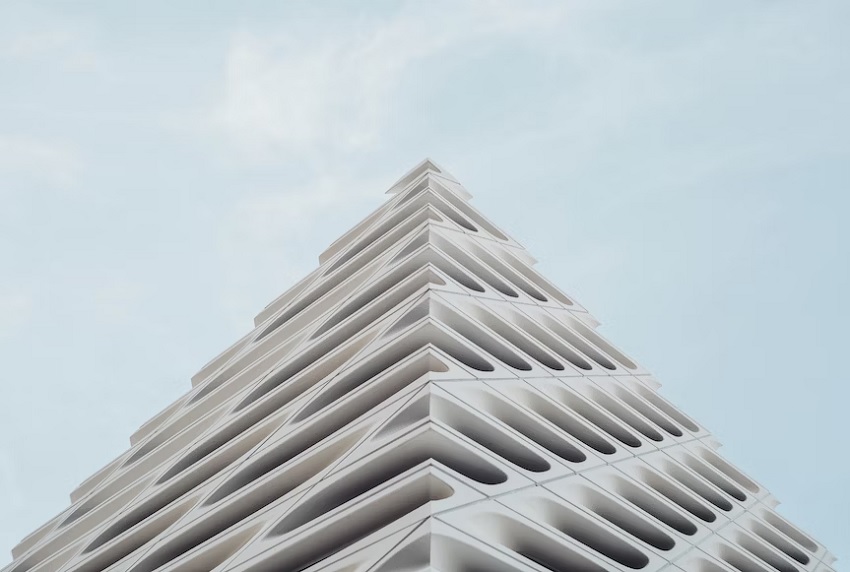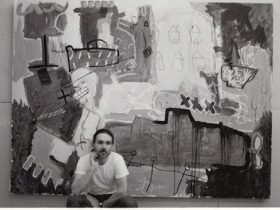Joseph Slusky is a sculptor known for combining traditional techniques with innovative materials. His sculptures, though engaging, have left viewers with varied impressions. Slusky’s influence endures in the art world, inspiring artists and sparking discussions about the intersection of convention and innovation.
As the world witnessed the tumultuous 1960s and 1970s, as a young artist, Slusky embarked on a journey that would forever alter the trajectory of his artistic career. Born in Philadelphia, Slusky’s fascination with the dynamic interplay between art and architecture began at an early age. His upbringing in Los Angeles, the epicenter of car culture, exposed him to the sleek lines and impeccable finishes of automobiles, igniting his curiosity about form and aesthetics.
As Slusky delved into the world of art, he found himself drawn to the expressive power of poetry, which became a pivotal influence on his creative process. Poetic language provided him with the tools to imbue his sculptures with a sense of depth and meaning, inviting viewers to explore the hidden realms within his artwork.
The Berkeley Connection
Slusky’s artistic journey took a crucial turn when he pursued a degree in architecture at UC Berkeley in the early 1960s. The rigorous architectural education molded his artistic sensibilities, encouraging him to envision and draw prospective structures that did not yet exist. This fascination with potentiality and fantasy laid the groundwork for his later sculptural explorations.
Important Mentorships
At UC Berkeley, Slusky had the opportunity to study under esteemed artists, including Sidney Gordin, Wilfred Zogbaum, William King, Robert Hudson, Peter Voulkos, James Melchert and Ibram Lassaw. These influential figures shaped his artistic ethos, imparting a solid sense of theory and practice. Inspired by their approach, Slusky sought to merge organic and industrial elements in his work, creating sculptures that blurred the lines between nature and machine.

Playful Surrealism
Slusky’s early works from the late 1960s and early 1970s showcased his playful surrealistic style. Using metal and plastic filler, he crafted flowingly organic sculptures that danced between cylindrical pipes, bulbous forms, and mesh grids. At times, these sculptures alluded to missiles and military apparatus, reflecting the anti-war sentiments prevalent during that era.

His pieces also hinted at California’s automobile culture, particularly that of Los Angeles, where he spent his formative years.
An Evolution in Style
In the mid-seventies, Slusky’s sculptures underwent a transformation, and he shifted away from monochromatic spray painting, embracing a more geometric and cubistic approach. Yet, his works retained their surrealistic essence, exploring the rhythmic interplay of space. This period marked Slusky’s experimentation with hand-painting his sculptures with a wild array of colors, infusing them with a sense of humor and whimsy.
The Dionysian Darkness
While Slusky’s sculptures elicited admiration for their wit and humor, critics sometimes overlooked the deeper layers of his work. Beneath the surface, Dionysian darkness coexisted with levity, creating a compelling dichotomy in his art.
Drawing inspiration from psychological depths, Slusky’s sculptures embodied the amalgamation of opposites, forming a sculptural unity that spoke to the intricacies of human emotions.
An Architectural Aesthetic
Despite his detour into sculpture, Slusky’s architectural background continued influencing his artistic expression. He often viewed the elements of his sculptures metaphorically, connecting various forms and structures in a dance of visual rhythm. This architectural perspective allowed him to craft sculptures transcending mere objects, becoming conduits for personal revelation and exploration.
Continuing the Journey
As the years passed, Slusky’s sculptures evolved with his artistic sensibilities. Themes of movement, form, and interconnection continued to thread through his works, manifesting in intricate metal sculptures that seemed to defy gravity. Each piece captured a moment of creative gestation as if the sculpture were emerging from the artist’s imagination.

In other words, Joseph Slusky’s artistic journey has been self-discovery and transformation. From his architectural roots to playful surrealism and poetic sensibilities, Slusky’s sculptures have left a mark on the art world. His ability to merge organic and industrial elements, explore the depths of the human psyche, and infuse his works with humor and profundity reflects the complexity and depth of his artistic vision. Joseph Slusky, a master of sculptural unity, continues to inspire and delight audiences with his ever-evolving creations that bridge art and architecture.

















